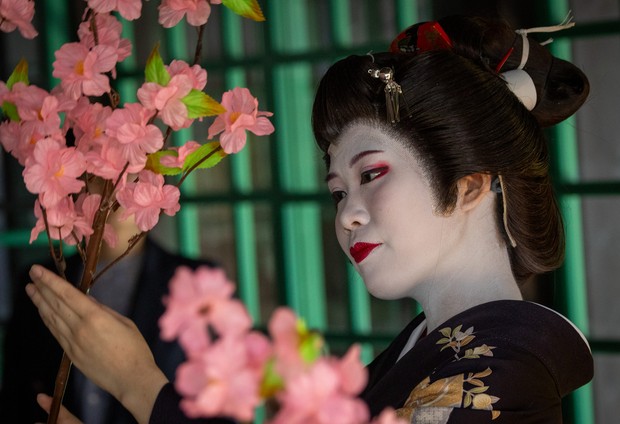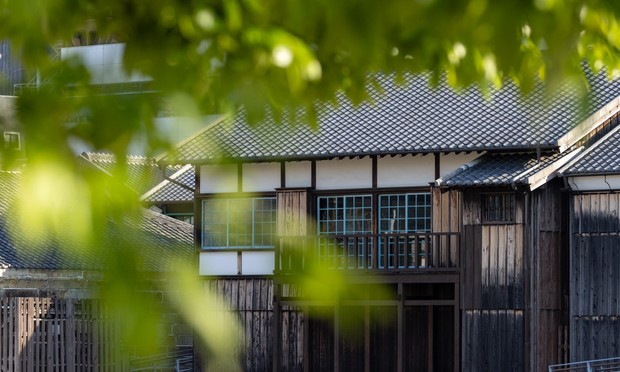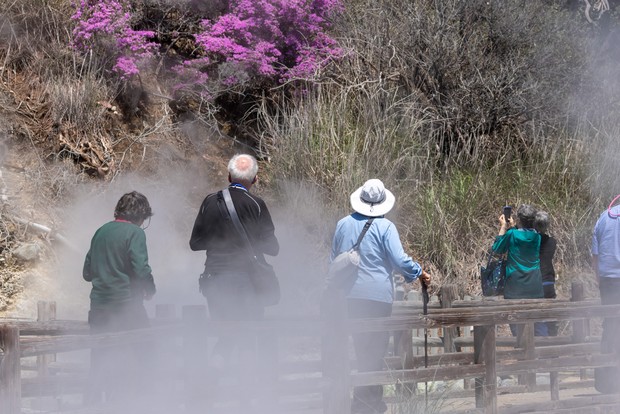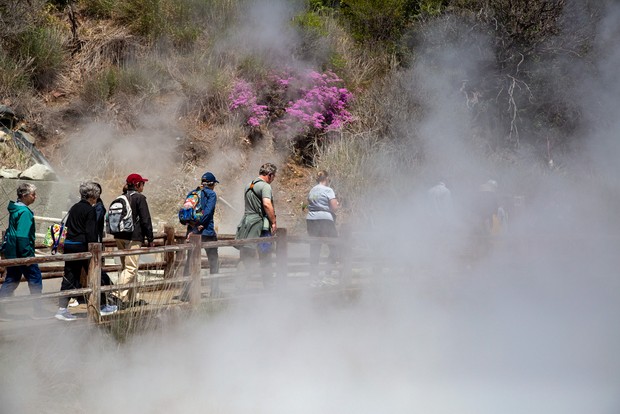29 Apr 2025
Culture and history in Nagasaki

We could see the quirky city skyline and the hills surrounding Nagasaki as we arrived for our excursions.
For some, the first destination was the Atomic Bomb Museum. There we saw the devastating effect of the bomb dropped at 11:02 am on August 9, 1945. The exhibits made clear the tragedy that exploded on that warm summer day, and the destruction and radiation that have continued to affect the place and the people for decades – even until today. A short stroll through the city brought us to the Nagasaki Peace Park. This is a sculpture garden where many different aspects of the population unite to show their commitment to peace. We left an offering of paper cranes near the principal statue to show our support for this noble cause. As we returned to the port for lunch, we could see that Nagasaki has become a vibrant and picturesque metropolis with colourful shops, clacking trams, and a busy populace. To get a better view we walked up the hill to the Glover Garden with its iconic western houses and lovely gardens.
The rest drove into the countryside, past rice fields, and up a winding mountain road to Mount Unzen. We rode the Unzen Ropeway for extensive sea views, made better as we made the short climb to the summit for vistas in both directions. Back down the ropeway, we entered Unzen Jigoku, ‘Unzen Hell’. In this geothermal area, we walked around boiling and pungent sulphur springs and hissing steam plumes, giving ample evidence of Japan’s volcanic forces. Lunch was a “hot pot” of local cuisine.
All of us visited the famous district of Dejima. We assembled in the upper floor of the Captain’s House for a captivating Geisha performance. We saw up-close the lovely kimonos and graceful dancing of the two performers with a shamisen player for music, and fans and cherry blossoms as props. Then, the bravest among us were added to the musical ensemble on drums and bells, and as dancers to try to follow the motions of our hostesses. Everyone enjoyed our efforts.
Dejima was the only point of contact for Japan with Europe for the entire Edo Period when Japan was closed to the world. The district has been faithfully restored, and, with many displays and excellent English interpretive signage, we were able to see how this small island played an important part in preserving links that blossomed in the eventual opening of Japan.
As we returned to Heritage Adventurer and cast off, we were treated to the farewell performance by the Nagasaki High School Brass Band. From Indiana Jones to We Are the World they showed real spirit, talent and enthusiasm in what was a rousing sendoff.
The day was not yet complete as after dinner a special Kimono Demonstration was held. The history was discussed then our Japanese guide, Hannah-san, and a volunteer went through each of the many layers of robes and obis to explain the special cultural significance of this uniquely Japanese garment.
Images © J. Mishina, Heritage Expeditions



Yakushima Island is the wettest part of Japan, so it was not a surprise to look out the window as we reached the port. Still, you can’t have …READ MORE
Our arrival at Uwajima Port was met by a fantastic welcoming committee, including two young girls in kimonos. Our golden weather continued as we se…READ MORE
Our Discover the Islands of Japan adventure continued as we arrived at Uno Ko (Uno Port), where we enjoyed breakfast in the morning sun. Our…READ MORE









